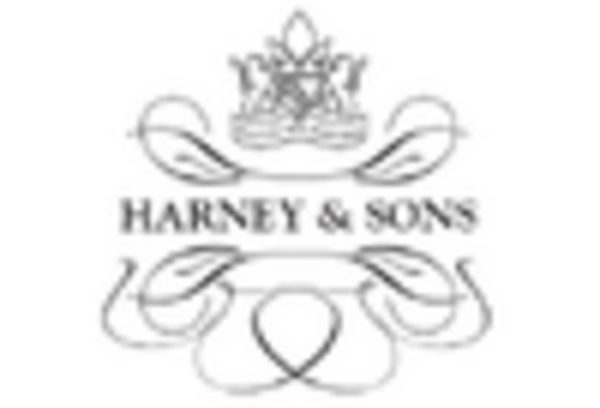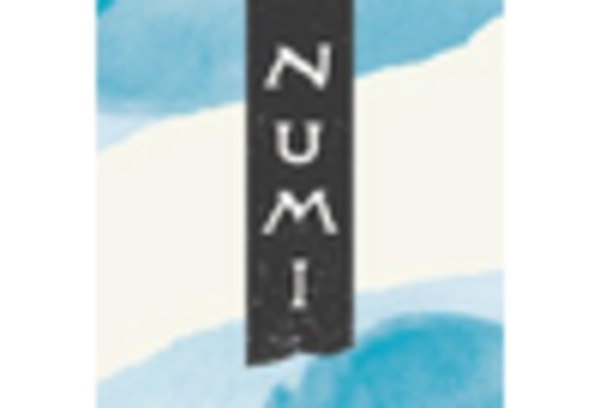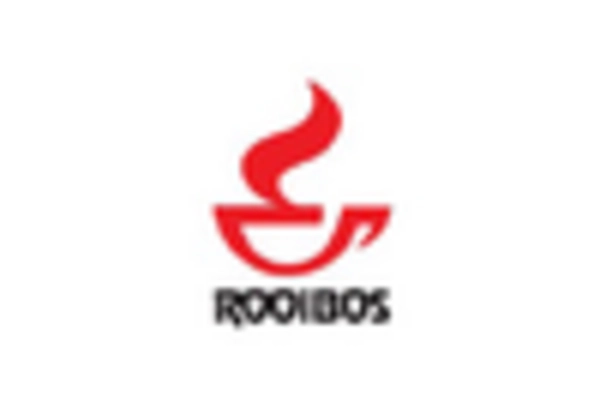The Organic Tea Market is currently characterized by a dynamic competitive landscape, driven by increasing consumer demand for health-conscious products and sustainable sourcing practices. Major players such as Twinings (GB), Harney & Sons (US), and Numi Organic Tea (US) are strategically positioning themselves through innovation and regional expansion. Twinings (GB), for instance, has focused on enhancing its product line with new herbal blends that cater to evolving consumer preferences, while Harney & Sons (US) emphasizes premium quality and artisanal craftsmanship, appealing to a niche market segment. Collectively, these strategies not only enhance brand loyalty but also intensify competition as companies vie for market share in a growing sector.
In terms of business tactics, companies are increasingly localizing manufacturing and optimizing supply chains to meet consumer expectations for freshness and sustainability. The Organic Tea Market appears moderately fragmented, with a mix of established brands and emerging players. This structure allows for diverse offerings, yet the influence of key players remains substantial, as they set trends and standards that smaller companies often follow.
In August 2025, Numi Organic Tea (US) announced a partnership with a leading sustainable agriculture organization to enhance its sourcing practices. This collaboration aims to improve the traceability of its tea supply chain, ensuring that all products meet stringent organic standards. The strategic importance of this move lies in Numi's commitment to sustainability, which resonates with environmentally conscious consumers and strengthens its market position.
Similarly, in September 2025, Pukka Herbs (GB) launched a new line of organic teas specifically designed for wellness, targeting the growing trend of holistic health. This initiative not only diversifies Pukka's product offerings but also aligns with consumer interests in health and wellness, potentially increasing its market share in a competitive environment.
Moreover, in July 2025, Yogi Tea (US) expanded its distribution channels by entering into a partnership with a major online retailer, enhancing its digital presence. This strategic action reflects the increasing importance of e-commerce in the organic tea sector, allowing Yogi Tea to reach a broader audience and adapt to changing consumer shopping behaviors.
As of October 2025, the Organic Tea Market is witnessing trends such as digitalization, sustainability, and the integration of artificial intelligence in supply chain management. Strategic alliances are becoming increasingly vital, as companies collaborate to enhance their sustainability efforts and technological capabilities. Looking ahead, competitive differentiation is likely to evolve, shifting from traditional price-based competition to a focus on innovation, technology, and supply chain reliability. This transition suggests that companies that prioritize these aspects will be better positioned to thrive in an increasingly competitive landscape.

















Leave a Comment